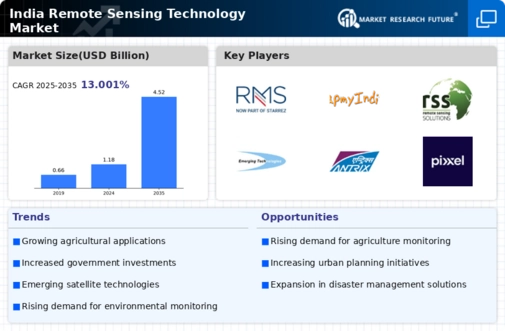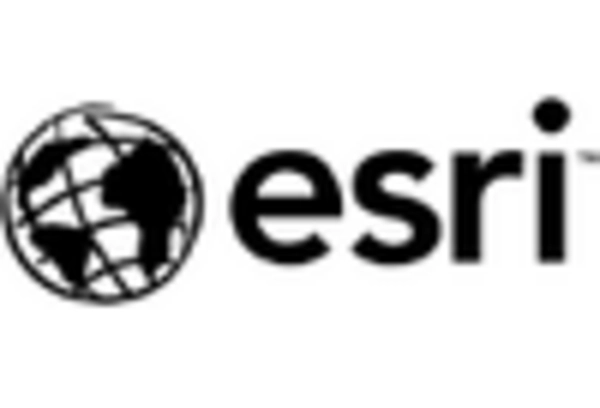Growing Applications in Agriculture
The remote sensing-technology market is significantly influenced by its expanding applications in the agricultural sector. Farmers and agribusinesses are increasingly utilizing remote sensing data to monitor crop health, optimize irrigation, and manage resources more efficiently. The use of satellite imagery and aerial data allows for precision agriculture, which can enhance yield and reduce costs. In India, the agricultural sector contributes around 17% to the GDP, and the integration of remote sensing technologies is expected to improve productivity. As a result, the market is likely to see a substantial increase in demand from agricultural stakeholders, potentially leading to a market growth rate of 10% annually.
Urbanization and Smart City Initiatives
Urbanization in India is accelerating, leading to increased demand for effective urban planning and management solutions. The remote sensing-technology market is poised to benefit from this trend, particularly through smart city initiatives that aim to improve infrastructure and service delivery. Remote sensing data can assist in urban planning by providing insights into land use, traffic patterns, and environmental conditions. As cities expand, the need for accurate and timely data becomes paramount. The Indian government has allocated substantial funds for smart city projects, which could drive the adoption of remote sensing technologies, potentially resulting in a market growth rate of around 15% over the next few years.
Rising Interest in Climate Change Research
The remote sensing-technology market is increasingly driven by the growing interest in climate change research and its implications. Researchers and policymakers are utilizing remote sensing data to study climate patterns, monitor deforestation, and assess the impact of climate change on various ecosystems. In India, where climate change poses significant challenges, the demand for accurate data is critical for formulating effective policies. The government and research institutions are investing in remote sensing technologies to enhance their capabilities in climate monitoring. This focus on climate change research is likely to stimulate market growth, with projections indicating a potential increase of 8% annually as more stakeholders seek to leverage remote sensing data for environmental sustainability.
Technological Advancements in Satellite Systems
The remote sensing-technology market in India is experiencing a surge due to rapid advancements in satellite technology. Enhanced satellite capabilities, such as improved resolution and data acquisition rates, are enabling more accurate and timely data collection. For instance, the Indian Space Research Organisation (ISRO) has launched several satellites, including the Cartosat series, which provide high-resolution imagery for various applications. This technological evolution is expected to drive market growth, as industries increasingly rely on satellite data for decision-making. The market is projected to grow at a CAGR of approximately 12% over the next five years, reflecting the increasing reliance on satellite-based remote sensing solutions.
Environmental Monitoring and Disaster Management
The need for effective environmental monitoring and disaster management is a critical driver for the remote sensing-technology market in India. With the increasing frequency of natural disasters, such as floods and cyclones, there is a growing demand for real-time data to aid in disaster response and recovery efforts. Remote sensing technologies provide vital information for assessing damage, monitoring environmental changes, and planning mitigation strategies. Government agencies and NGOs are leveraging these technologies to enhance their disaster management capabilities. This trend is likely to propel the market forward, as investments in remote sensing solutions for environmental monitoring are expected to rise significantly in the coming years.

















Leave a Comment